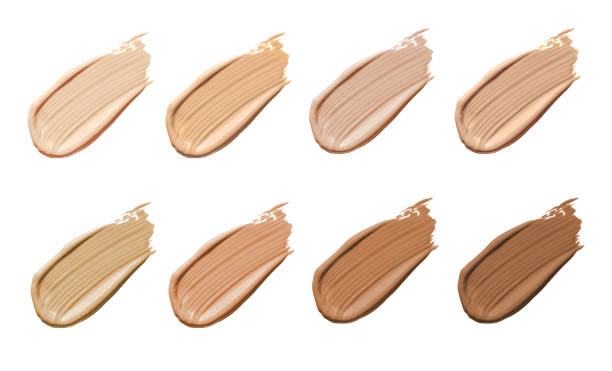When it comes to makeup, choosing the right foundation shade and formula is crucial for achieving a flawless complexion. The foundation is the base upon which all other makeup is built, and getting it right can enhance your natural beauty while providing a smooth, even canvas. In this article, we’ll explore the key factors to consider when selecting the perfect foundation shade and formula for your skin type and tone.
Determining Your Skin Tone and Undertone

Understanding your skin tone and undertone is the first step in finding the ideal foundation shade. Skin tone refers to the surface color of your skin, which can be light, medium, or dark. Undertones, on the other hand, are the subtle hues beneath the surface. They can be warm (yellow, golden, or peachy), cool (pink, red, or blue), or neutral (a mix of both). To determine your undertone, examine the veins on your wrist: if they appear greenish, you likely have warm undertones; if they look bluish, you have cool undertones; and if you see a mix, you may have neutral undertones.
Matching Foundation to Your Skin Type
Choosing the right formula is just as important as finding the correct shade. Different skin types require different formulations for optimal results. Consider the following:
-
Oily Skin:
Opt for oil-free, matte foundations to control shine and reduce pore appearance. -
Dry Skin:
Look for hydrating, dewy foundations to add moisture and create a radiant finish. -
Combination Skin:
Use a balanced foundation that targets both dry and oily areas, providing an overall even texture. -
Sensitive Skin:
Select foundations with gentle, non-irritating ingredients to prevent breakouts or reactions.
Choosing Between Liquid, Powder, and Cream
Foundations come in various forms—liquid, powder, and cream—each offering different benefits. Liquid foundations are versatile and suitable for most skin types, providing customizable coverage from sheer to full. Powder foundations are excellent for oily skin and provide a matte finish, but they can accentuate dry patches on drier skin types. Cream foundations offer rich coverage and are perfect for dry or mature skin, delivering a smooth and dewy finish. Assess your coverage needs and skin type to determine the most suitable foundation form.
Testing and Swatching Foundations
The best way to ensure a perfect match is by testing foundations in natural light. Swatch a few shades on your jawline and blend them into your skin. The ideal shade will disappear seamlessly without leaving a noticeable line. Avoid testing on your wrist or hand, as these areas are usually a different color than your face. Whenever possible, request samples to test the foundation’s wear throughout the day before committing to a full-size purchase.
Conclusion
Choosing the right foundation shade and formula is essential for a flawless makeup look. By understanding your skin tone and undertone, matching the foundation to your skin type, and selecting the appropriate form, you can achieve a beautiful and natural-looking complexion. Always test shades in natural light to ensure the best match, and don’t hesitate to seek expert advice if needed. With the right foundation, you’ll create a perfect base for all your makeup adventures.
FAQs
What if I’m between two foundation shades?
If you find yourself between two shades, try mixing them to create a custom color. Some brands offer mixers specifically for this purpose, allowing you to adjust the foundation’s tone to match your skin perfectly.
Can I use a summer and winter foundation?
Yes, it’s common to use different foundation shades for different seasons. Your skin tone can change with sun exposure, so having a slightly darker shade for summer and a lighter one for winter can help maintain a natural look year-round.
How do I prevent foundation from oxidizing?
Foundation oxidation occurs when it turns darker after application. To prevent this, use a primer to create a barrier and choose foundations with non-comedogenic formulas. Testing foundation wear before a full purchase can also help identify any oxidation issues.
Is it necessary to use a setting powder with foundation?
Setting powder is not always necessary but can be beneficial for oily skin to reduce shine and set the foundation in place. It can also help prolong foundation wear and provide a matte finish. Choose a finely milled powder for a seamless application.
How do I choose the right foundation coverage?
Foundation coverage depends on your skin concerns and preference. Sheer coverage is ideal for a natural look, medium coverage balances imperfections while still looking natural, and full coverage provides a completely flawless finish. Consider your skin’s needs and the occasion when selecting coverage.



